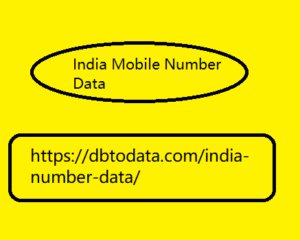Post by account_disabled on Mar 9, 2024 23:31:04 GMT -8
There is a new buzzword that is galvanizing the attention of Silicon Valley “Generative AI”. The term Generative Artificial Intelligence refers to the use of machine learning and deep learning techniques to generate new content based on previous data. In particular, we talk about the use of large language models (Large Language Models) which allow you to obtain texts, images, videos, unpublished code starting from a textual input. The phases of Generative AI This is not a new field, but it has undergone rapid acceleration in the last year. The reason is easy to say: today we have more data than in the past, more computing power and better generative algorithms.
And we're just getting started: Sequoia Capital predicts a trillion-dollar economic impact in the India Mobile Number Data coming years. Until 2015, to allow a machine to understand language, not very broad linguistic models were used. They were effective for very specific tasks such as event prediction, spam detection, basic translation. But in 2017 came the turning point: a Google Research paper introduced a new neural network architecture called "transformer", capable of generating higher quality linguistic models, taking less training time. Furthermore, these transformers can be easily customized to operate in specific domains. They are starting to be tested by companies such as Microsoft, Google, OpenAI and, so, in 2020 we see the first leap in species: GPT-3 is the model that works best for creating texts. But these models are difficult to operate, requiring complex hardware architectures, powerful GPUs so they are available to few companies.

Little by little, costs are starting to drop and, today, the first stand alone and web based software have appeared and are opening the doors to mass testing (see post on generating images from text ). DALL-E 2, released in beta in July, is used by more than 1.5 million people producing more than 2 million images per day. Midjourney, first open to the public, has more than 3 million users. The next phase will be to integrate these generation methods into products already widely used by people. Microsoft has already announced that Dall-E can be used within Bing and plugins have been created to use Stable Diffusion in Adobe products. The domains of Generative AI Let's see what the application domains of generative artificial intelligence are, where we are and where we can get to.
And we're just getting started: Sequoia Capital predicts a trillion-dollar economic impact in the India Mobile Number Data coming years. Until 2015, to allow a machine to understand language, not very broad linguistic models were used. They were effective for very specific tasks such as event prediction, spam detection, basic translation. But in 2017 came the turning point: a Google Research paper introduced a new neural network architecture called "transformer", capable of generating higher quality linguistic models, taking less training time. Furthermore, these transformers can be easily customized to operate in specific domains. They are starting to be tested by companies such as Microsoft, Google, OpenAI and, so, in 2020 we see the first leap in species: GPT-3 is the model that works best for creating texts. But these models are difficult to operate, requiring complex hardware architectures, powerful GPUs so they are available to few companies.

Little by little, costs are starting to drop and, today, the first stand alone and web based software have appeared and are opening the doors to mass testing (see post on generating images from text ). DALL-E 2, released in beta in July, is used by more than 1.5 million people producing more than 2 million images per day. Midjourney, first open to the public, has more than 3 million users. The next phase will be to integrate these generation methods into products already widely used by people. Microsoft has already announced that Dall-E can be used within Bing and plugins have been created to use Stable Diffusion in Adobe products. The domains of Generative AI Let's see what the application domains of generative artificial intelligence are, where we are and where we can get to.
